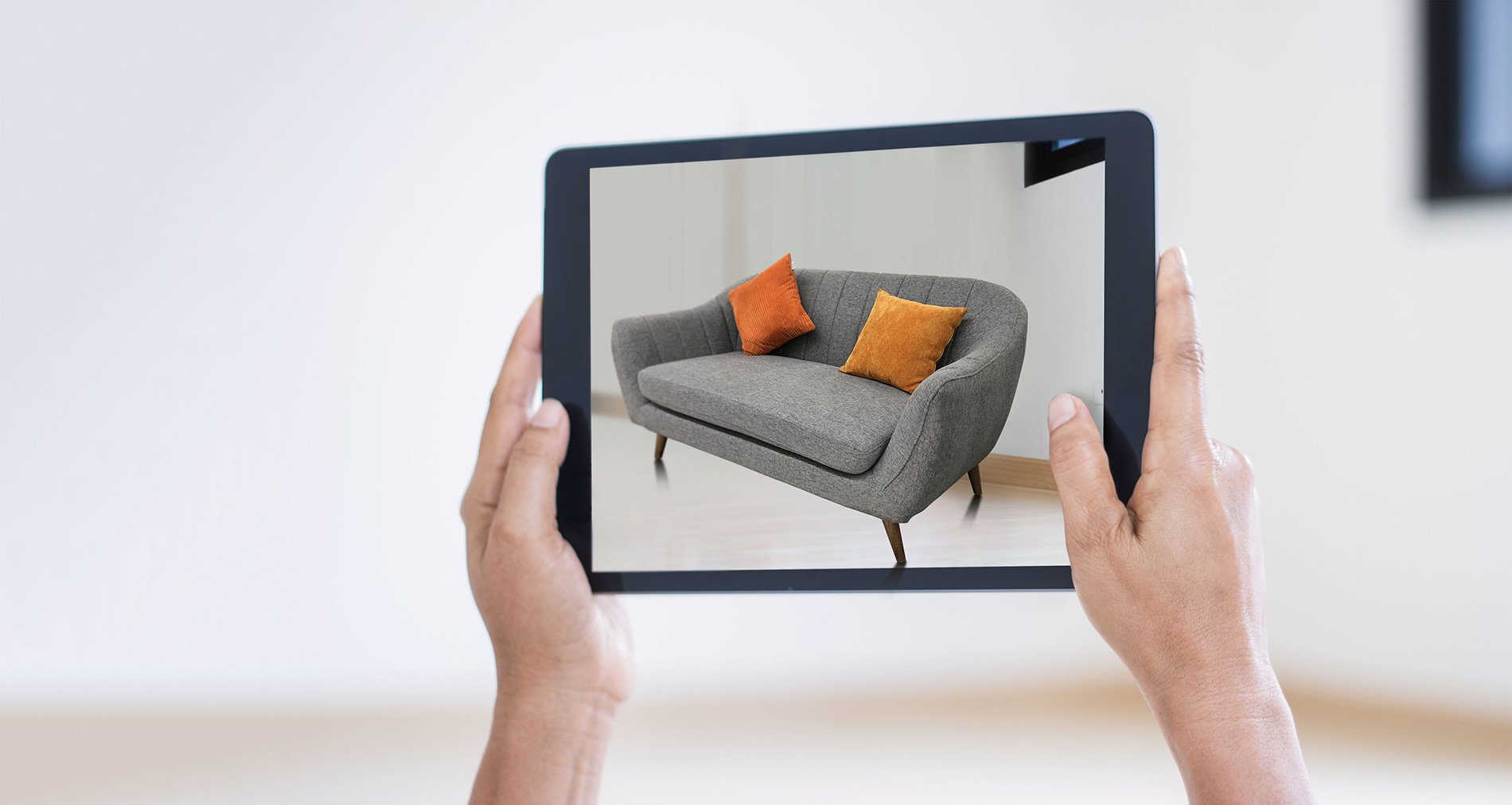What Is Augmented Reality? A Practical Overview
Augmented reality (AR) is a technology that lets people superimpose digital content (images, sounds, and text) over a real-world environment. AR got a lot of attention in 2016 when the game Pokémon Go made it possible to interact with Pokémon superimposed on the world via a smartphone screen.
Key Takeaways
- Augmented reality (AR) is a technology that allows an interactive image to be superimposed on reality, via smartphone or webcam.
- AR enables consumers to "try before they buy", seeing how an item will look on them or in their space before purchasing it.
- Consumers are more likely to buy from an ecommerce store that offers AR, as it increases customer confidence in their purchase.
- AR is used in training and education, entertainment, gaming, and retail.

AR has become increasingly popular. Apple introduced its ARKit platform in 2017, and Google launched web API prototypes later that year. And then there are Apple’s AR glasses, rumored to launch soon, which will let wearers have AR experiences without looking down at a phone.
In other words, AR is on the verge of becoming a part of everyday life. If you’re still wondering what is augmented reality, you’re in the right place. In this article, we’ll explore what AR is with a focus on its practical and commercial applications.
What is Augmented Reality?
Augmented reality is what it sounds like: reality, enhanced with interactive digital components. The most commonly used AR applications these days rely on smartphones to showcase the digitally augmented world. Users can activate a smartphone’s camera, view the real world around them on the screen, and rely on an AR application to enhance that world in any number of ways via digital overlays:
- Superimposing images, digital information, and/or 3D models.
- Adding real-time directions.
- Inserting labels.
- Changing colors.
- Altering the user or their environment's appearance via "filters" on Instagram, Snapchat, TikTok, and other social apps.
Various devices can display AR, and the list is growing: screens, glasses, handheld and mobile devices, and head-mounted displays.
To understand what augmented reality is, it’s also important to understand what it is not.
AR is not a fully immersive experience like virtual reality (VR). While virtual reality requires users to wear a special headset and pulls them into a completely digital world, AR lets them continue interacting with the physical world around them.

Common AR Use Cases
So what is augmented reality used for these days? A lot more than helping people track down animated pocket monsters. In fact, in 2020, nearly every industry found ways to apply AR technology to improve processes and outcomes. Common uses include:
- Training and education. Dynamic, AR-based instructions let people perform new tasks more easily and quickly than traditional training methods, like instruction manuals. As wearable devices like AR-powered smart glasses, AR contacts, and AR headsets become more widely available, the potential for training via augmented reality will be tremendous.
- Entertainment. AR has been enhancing entertainment for years. In 2012, a hologram of Tupac Shakur appeared onstage with Snoop Dogg at Coachella. In 2020, a fully CGI avatar who happens to be an Instagram influencer was signed by talent agency CAA. And to adapt to the realities of the COVID-19 pandemic, the band Real Estate offered a “Quarantour” in which an AR-powered tour to replaced live shows that had been cancelled due to worldwide quarantines.
- Gaming. Today, dozens of smartphone-based games incorporate AR elements. The popularity of AR games is no surprise, as gaming was one of the most obvious early applications that many people saw for AR and VR capabilities.
- Selling. These days, it’s possible to virtually try on or try out a variety of merchandise before buying, thanks to AR. Sephora’s app lets you view cosmetics in AR on your face; IKEA offers a chance to “see” furniture in your home; paint brands let you virtually view colors on your walls; Warby Parker makes it possible to “try on” glasses frames without actually visiting a store location or ordering samples. AR applications for ecommerce are poised to become the norm.
Today, most of these AR experiences are made possible by smartphones. However, the development of more advanced AR devices (like Apple’s AR glasses or Microsoft's HoloLens) could open the door to even more applications in the future.
The benefits of AR are only continuing to expand to new sectors, such as healthcare, manufacturing, utilities, telecommunications, education, and public safety.
Imagine, for example, viewing IKEA furniture in the comfort of your own physical environment via AR, ordering it online, and then receiving it with assembly instructions that projected themselves right on the pieces in the box, thanks to your AR-enabled glasses. The possibilities are endless and endlessly exciting.
 AR and eCommerce
AR and eCommerce
While all of the use cases for AR mentioned above are intriguing, the one most relevant to most companies, especially with the rise of ecommerce and mobile shopping, is AR-powered selling.
For more insight on how AR can enhance a brand’s selling capabilities, check out these articles:
- 27 Augmented Reality Statistics You Should Know in 2024
- Why B2B Teams Are Using 3D Configuration and Augmented Reality
- Announcing Configurable AR: The Next Generation of Virtual Selling
- 6 Brands Using Augmented Reality in eCommerce
How Brands Can Implement AR
The promise of selling more with help from AR is compelling, but it also raises an important question: what technology does a company need to introduce AR features to its existing website?
The answer, of course, will vary among brands, but adding AR to a website is much easier, faster, and more accessible than it was even a couple of years ago, thanks to new software on the market.
If you’re intrigued by the potential AR has to improve your bottom line, here are a few guiding principles to keep in mind:
- AR functionality should live on your website, not in a dedicated AR app. Customers don’t want to download an app just to use AR features. To enjoy the sales boost that AR features can offer, eliminate unnecessary hurdles to using them. Most web browsers enable AR technology.
- AR-generating software can save you time, energy, and money. Today, software like Threekit makes it possible to generate AR content with a SaaS model. This is in part thanks to Threekit's AI Visual Discovery technology. With headless tech that incorporates with your existing sales software, the path to selling with AR is smoother, faster, and more accessible.
- Build AR for smartphones. If you want the benefits AR offers, you have to maximize the odds that your customers will use it. That means creating AR experiences that work with the tech most people have today, which means smartphones.
For more on the technology that powers AR, check out our guide The State of Augmented Reality on the Web.
Conclusion
From help with product design and selection to interactive games, the applications for AR are only going to expand as the tech gets better. The key is knowing how to:
- Successfully integrate AR into your business.
- Connect it to your brand and customer experience.
With the help of the right AR solution, like Threekit's Augmented Reality, you'll be able to take advantage of the latest in AR technology. You can significantly boost your company's ROI with this worthwhile investment.
But don't just take our word for it. Below are just a few statistics that indicate that the impact of AR in business is only growing:
- 61% of consumers say that they prefer retailers that provide AR experiences.
- 71% of shoppers say that they would shop more often if they could use AR.
- Using AR technology in eCommerce can increase conversion rates by 40%.
- According to data from Statista, the global market for AR, VR, and mixed reality (MR) is expected to rise over $100 billion by 2026.
What is augmented reality? It's the future of selling. Ready to see how Threekit's AR technology can boost your business? Schedule a demo today.

Download our eBook
If you’re making the business case for 3D and augmented reality product visuals, this is the guide you need. Get real data on how this innovative technology pays off.




